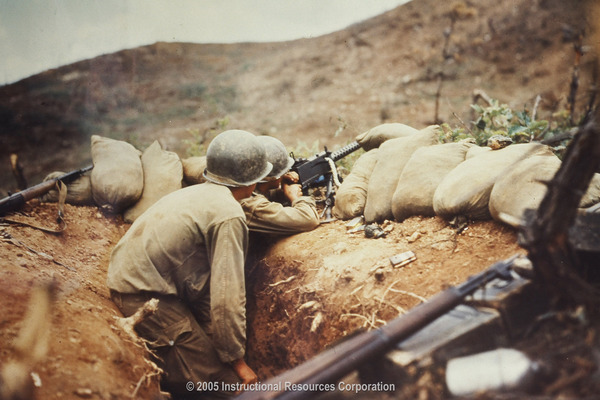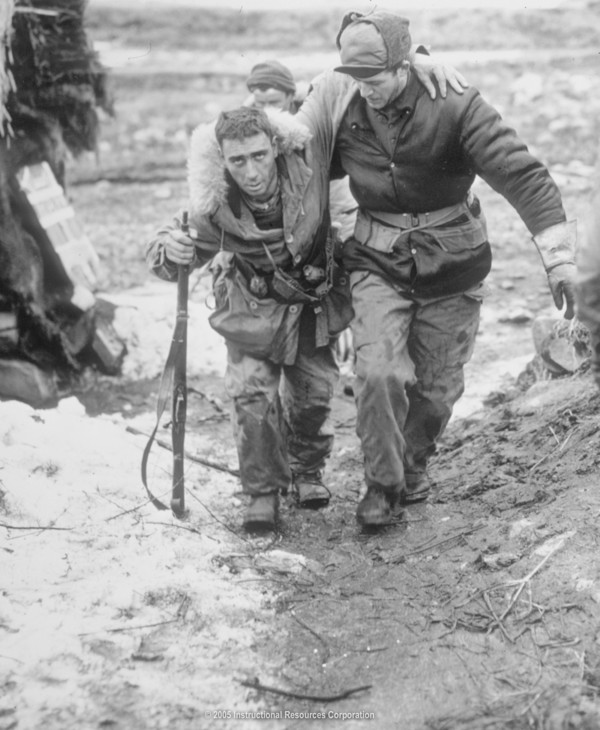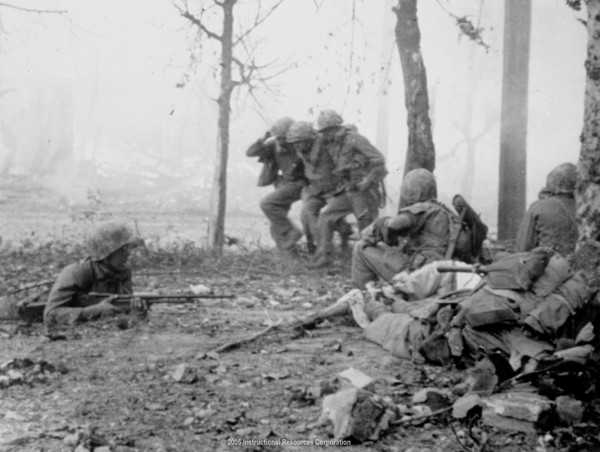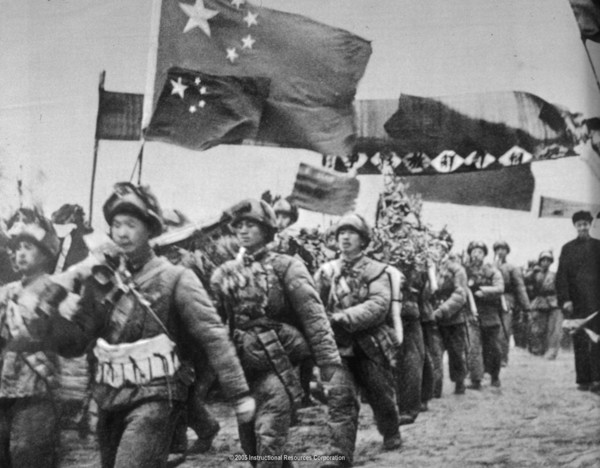Introduction
| Two U.S. Soldiers in the Korean War | |||
 |
|
||
 |
|||
 |
|||
| Two U.S. Soldiers in the Korean War IRC, 2005. Image.
Discovery Education. Web. 15 July 2014. <http://www.discoveryeducation.com/>. |
|||
| Korean War: Soldier at First-Aid Station, 1951 | |||
 |
|
||
 |
|||
 |
|||
| Korean War: Soldier at First-Aid Station, 1951 IRC, 2005. Image. Discovery Education.Web. 15 July 2014. <http://www.discoveryeducation.com/>. |
|||
| UN Troops on Outskirts on Seoul, Korea | |||
 |
|
||
 |
|||
 |
|||
| UN Troops on Outskirts on Seoul, Korea IRC, 2005. Image.
Discovery Education. Web. 15 July 2014. <http://www.discoveryeducation.com/>. |
|||
| Chinese Troops Entering Korea in Late 1950 | |||
 |
|
||
 |
|||
 |
|||
| Chinese Troops Entering Korea in Late 1950 IRC, 2005. Image.
Discovery Education. Web. 15 July 2014. <http://www.discoveryeducation.com/>. |
|||
Central Question: Did the Korean War represent a triumph or a failure of American foreign policy?
While the fight to contain communism raged in Europe, a new front in the Cold War emerged in Asia. Determined not to lose another nation to communist aggression, President Truman pledged U.S. support to South Korea in their attempt to repel an attack by the communist North. The war evolved into a proxy war as the U.S. and western allies fought against North Korean soldiers supplied and financed by the Soviet Union. Though the armisticeagreement between warring parties to ceasefire settled the conflict at the 38th parallelthe line of latitude that marks the division between North and South Korea where it all began, victories were achieved by both sides. The United States accomplished its initial goal to contain communism within North Korea, while the Soviets proved their strength and power on the field battle. The war's ending proved one thing was certain; the fight for international influence and supremacy was far from over.
Following successful completion of this lesson, students will be able to:
- Describe the Communist Revolution in China, including the relocation of Nationalist Party members to Taiwan.
- Trace the origins of the Korean War and U.S. involvement in the area.
- Evaluate the major events and participants of the Korean War.
- Analyze the significance of the Korean War, including its influence on the broader Cold War.
The above objectives correspond with the Alabama Course of Study: US History 11 Objectives: 11.2.
This lesson incorporates the following Literacy Standards: R2, R7, R9, W6, & W9.



